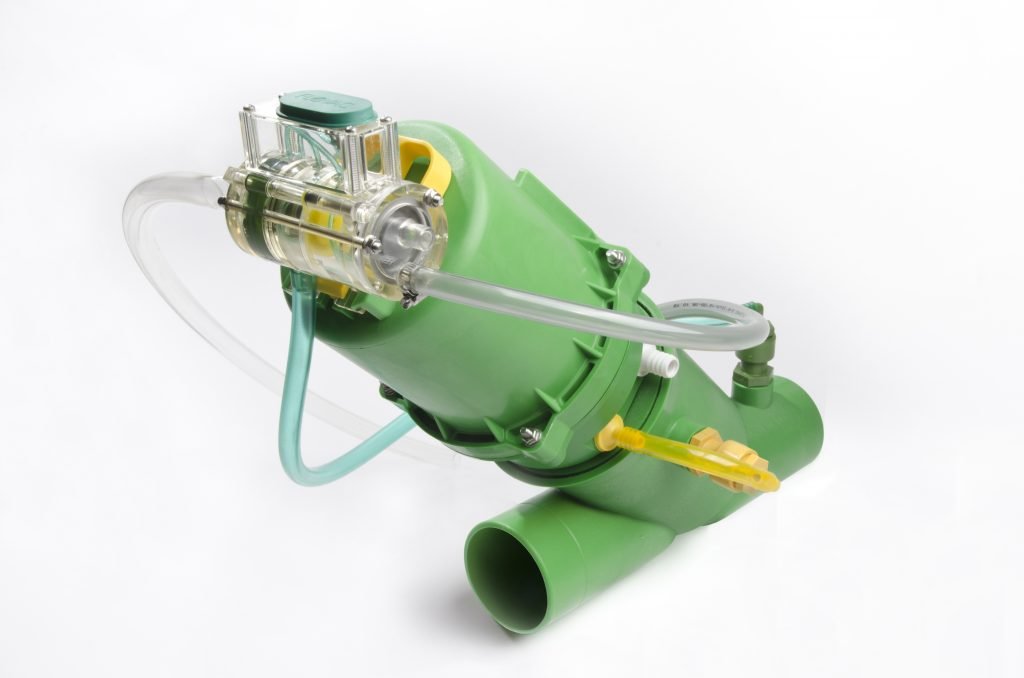
Leppneeme Port Estonia
A vacuum interface valve from Flovac located in Leppneeme, Estonia, has registered over 1.000.000 cycles. The endurance of Flovac’s vacuum sewerage system and its remote monitoring provides wear strength to our valves, even after so many cycles.
Although the vacuum system is designed that the vacuum valve allows for a flow of 0.25 litres per second (4 gallons per minute) from the houses, there are some occasions where parts of a system may be designed for higher flows. This may come from marinas, touristy spots, commercial areas, schools… Our engineers are very careful about how these higher flows enter the system.

Flovac Manager Georg Sarap checking the monitoring system via the touch screen at the vacuum pump station
Vacuum valves activate between 80 and 100 times per day
The vacuum valve is designed to activate pneumatically once 40 litres (10 gallons) enter the collection pit. This allows for a mix of air and water to enter the system with the correct air to liquid ratio so that the vacuum mains do not flood with too much liquid. In an average residential community, the vacuum valve will activate between 80 and 100 times per day. This is based on the average flow per house and the number of houses per collection pit.
For maintenance we recommend that certain parts in the valve and controller are replaced every 10 years or 300,000 cycles. The body itself has a design life of 50 years. European Standard EN 16932 calls for an endurance test with 500,000 cycles, as does the Australian Standard AS 4310.
One Million Cycles

Monitoring screen showing over 1 million cycles
At our project at Leppneeme in Estonia our team has been watching one of our high flow valves closely. It has a Flovac cable monitoring system which can tell the operator the number of times the valve has operated (in the image, Tsuklite arv:). It can also alert the operator to any faults, tell the temperature in the pit, the power use and location. Thanks to the monitoring system if any parts were wearing, would be rapidly detected, as the open time of the valve would start to change.
This week this valve passed its 1 million mark with number of cycles. Based on these activations it has done 34 years worth of work in just 8 years and is still going strong. Although we have other systems that have valves which have recorded over 1 million cycles as well, it has been great for the Estonian team watch it tick over via our monitoring system.




